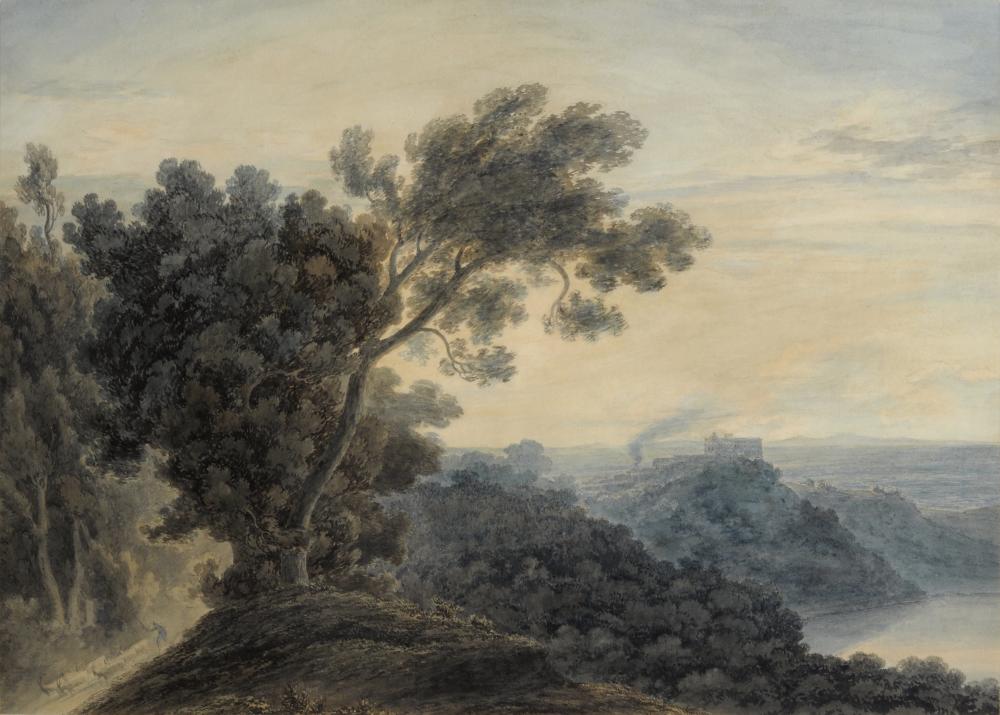THOMAS GIRTIN
(1775-1802)
Jedburgh Abbey from the South East
Provenance
Samuel Williams Reynolds, agent to the artist
From whom bought by Lady Elizabeth Weddell (1749 – 1831)of Newby Hall, West Yorkshire
John Charles Ramsden (Lady Weddell’s nephew)
By descent in the family until sold Sotheby’s, 11th July 1990,lot 91, £290,000 (record price)
Private Collection, UK
Sotheby’s, Nov. 28, 2002, lot 16, £470,000 (record price)
Private Collection, UK
Exhibited
London, Royal Academy, The Great Age of British Watercolours, 1993, no.146
Washington, National Gallery of Art, The Great Age of British Watercolours, 1993
London, Tate Gallery,Thomas Girtin – The Art of Watercolour, 2002, no 170
Literature
Andrew Wilton and Annie Lyles, The Great Age of British Watercolours, 1993, no. 146, pl.167
Greg Smith, Thomas Girtin – The Art of Watercolour, 2002, p.221, no.170 (illus.)
Susan Morris, Thomas Girtin – An Exhibition Review, The Burlington Magazine, Oct,. 2002, vol.CXLIV, p.639, ill., fig.50
This exceptional watercolour by Girtin depicts Jedburgh Abbey as seen from the southeast. The parish church remains visible in the five westernmost bays of the ruined nave and a spire belonging to another local church is shown to the left of the crossing tower. In the foreground a couple of figures can be seen crossing the bridge over Jed water.
Girtin first drew Jedburgh Abbey in the early 1790s when copying a sketch by the antiquarian James Moore, but his first and only documented visit to Jedburgh was in 1796. The present watercolour, one of Girtin's most important late works, can be dated to circa 1800. It relates colesly, to a view of the Abbey from further west along the river, now in the Cecil Higgins Art Gallery, Bedford. In both watercolours Girtin uses a muted palette of soft greens and yellows and contrasts passages of light with those of shadow. The undulating shapes and forms of the landscape in these workd are echoed throughout the gentle curves and arches of the Abbey and the surrounding scenery and the use of picturesque foreground as a passage of pure landscape, so important in Girtin's late watercolours, pre-empt nineteenth century Romantic landscape painters and a formula they were to follow.
Elizabeth Weddell (1749-1831) acquired the present work through the mezzotint engraver, Samuel William Reynolds who acted as an agent for Girtin. Through Reynolds she purchased at least five other important watercolours from Girtin's mature years and was described as a woman 'who loves and understands watercolours,' (Lady Louisa Stuart to the Duchess of Buccleuch, 1798).


